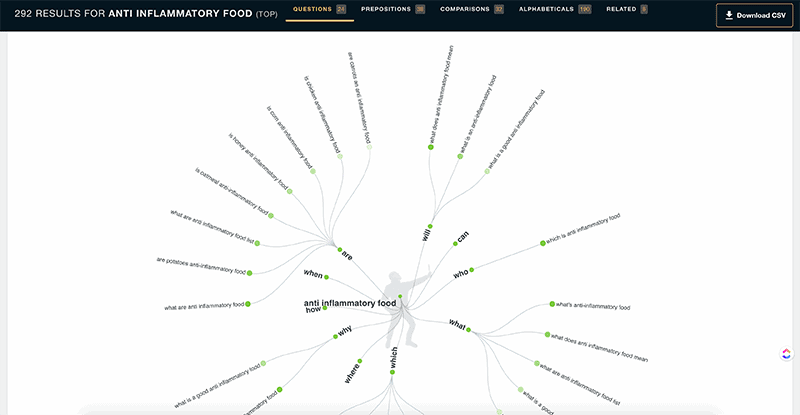Here’s the fact. If you don’t apply these 7 steps to optimise your website for better search results, then you will most probably have wasted all the time and money you invested in building your website. If you’re not getting as many visitors to your website as you need, then it’s time to optimise.
3 Signals Used To Rank Your Website That You Can Easily Control
68% of all website traffic comes from search engines. Google is holding the monopoly on search with Bing ranking second at 2.71% of the world’s search engine market. That’s why the focus is on Google and how its search engine determines page ranking in their search pages. The 3 most important signals Google uses to rank your website within search result pages is:
- high quality content
- links pointing to the site
- and the mobile user experience for site visitors.
High Quality Content
Quality content in your web pages is vital for attracting qualified prospects to your website. When Google notices people loving your content (ie traffic to the site, or social shares of the page) then it picks up on that. It will likely result in your page ranking higher in its search result pages when people are searching for relative content. Why is this a factor? Google wants to present the best information to searchers, so that they have a positive user (and search) experience.
Links Pointing To Your Site
Links from other websites pointing to your website also factor in to where you rank in search. Google sees the link as a vote of confidence in what your web page is saying. It’s confirmation that the content on the page must be of good quality. These links (called backlinks) also help people find your content, which results in the site traffic search engines are monitoring.
The Mobile User Experience
With many of us using mobiles more than computers to search, Google cares about how easily your visitors can navigate your website on a mobile. So they also monitor how mobile users react and make use of your web pages and will use that information in calculating where to rank your website.
Why Should Those 3 Signals Matter To You
As the internet doubles in size every two years, it is growing exponentially with content and users. More people are turning to phones and computers as a resource for gathering information and finding answers to questions on topics of interest. If your website isn’t keeping up with this growth then you, your website and your business will not be found. This means less traffic coming through and less people finding you! To stay ahead, make sure you’re employing the right digital marketing strategies. This provides more incentive for visitors to explore what else might lie behind your links online!
Imagine if Google sent twice as much traffic to your website today! What would that mean to your business?
Imagine, if Google sent twice as much traffic to your website today! What would that mean to your business? Well, it could have a number of different effects. It may not change anything because the site is poorly designed, not well optimised and doesn’t provide what people are looking for or help them take their next step with you. Or maybe it could mean twice as many inquiries, more business coming your way and establishing yourself in the field of expertise.
The Problem Is –
You Don’t Know What You Don’t Know
Unfortunately, most people just aren’t aware of the importance of optimising their web pages and content for Google. They think having a website with words describing what they do is enough to get noticed, but this just isn’t true anymore. Optimising your site will help you impress Google by attracting traffic, converting visitors into leads or inquiries – which can all be done in 7 simple steps, one page at a time.
Never settle for an underperforming website. It will only lead to a plateau in growth or stagnation where nothing changes. All the time you invested building your site will be wasted just because you chose not to optimise its pages and content.
I’ve Been There –
I Let My Website Underperform For Too Long
I can relate to the struggle you’re having. Even I, a website developer, had a website for years whereby I didn’t give it the attention it needed. It lay dormant, not attracting traffic and not generating the inquiries my business needed (when it needed it most).
Until the time I lost a long term client of more than 10 years. That was the kick in the pants I needed. Without their projects I was no longer creating the type of work I enjoyed – packaging design. Accessing a similar caliber client was not going to be easy. As it turns out, it was through this experience that I discovered the simple truth. That we should never under-estimate the power of a well-optimised website.
We should never underestimate the power of a well optimised website.
I decided to give some optimisation attention to just one page of my website, a page that detailed the type of work I wanted to do more of. I applied 7 simple steps to improve this page for both human visitors and search engines. After 6 months I started to notice that this page was my most popular. Most of the traffic was originating from Google searches. 2 years later and I am still getting new inquiries from all over the world. Some of those have become new clients. Optimising your website is a long term game with long term gains.
The Good News Is –
You Can Do What I Did
Implementing these 7 steps really is not as difficult as you probably think it is. Most business owners would be able to do it themselves. Even if you did pay a professional, the process brings about ongoing, long term results. You will more likely recoup the cost, plus the original website development investment, much quicker than by doing nothing at all.
Let’s get to it then. Here’s the 7 steps I took to attract more traffic to my website. It’s how you can optimise your website so that your web pages start getting better results in search and attract more traffic to your site.
7 Steps To Optimise A Web Page For Better Search Results
STEP 1: Choose the content page to optimise.
- Start optimising just one page of your website. Such as a popular blog post, a website page or one that sells your product or service. Choose one that is able to generate inquiries or result in a sale. I chose a web page that was about one particular service I wanted to get more work in.
STEP 2: Review the content’s quality and quantity.
- Is the content on your chosen page super helpful? Will others find it valuable, want to link to it and share it? If not, then you will want to rework the content and make it shine.
- If you want to see this content on the first page of a Google search – know this. Longer content pages has been shown to produce higher search rankings. The average length of top 10 result pages is between 2000-2500 words.
STEP 3: Improve the content to use search keywords.
- Research the keywords and phrases searchers uses in Google to find information like that on your chosen page. Then make sure they are used throughout the content.
- There are many ways to find out what words people are searching on. 3 simple and free ways are to:
- think like your customer
- look at your competition and
- use keyword research tools like answerthepublic.com

STEP 4: Format the content for easy reading.
- We don’t typically read long streams of text (except when it’s information we need). So in the next step, you format the text on your page for easy scan reading. There are text formatting options you can employ to make reading easier for human eyes to scan through it:
- Subheadings
- Bullet and numbered lists
- Bold and italic text
- Short sentences and paragraphs
- Blockquotes and pull quotes
- White space between paragraphs and lines of text
STEP 5: Use images properly and optimise for search.
- Images are a valuable asset in SEO that are often overlooked and incorrectly used.
- Most people use images in the wrong way. To optimise your images so they add value to your content do the following:
- Add ALT Tags using keywords
- Reduce image file size (do not use images straight from your phone or camera)
- Change the file name to include keywords
- Use the required pixel dimensions
STEP 6: Improve the meta title and description.
- Make sure your page’s meta data (page title and description) uses the keywords identified and follows Google’s character limit recommendations.
STEP 7: Get backlinks from other websites.
- These are links that link from another website to your website. Your website needs backlinks to help improve how Google will rank it within search result pages. Google uses backlinks in two ways:
- To determine the quality of the web page
- To determine where your page should rank within a search page
Remember how much time and money you invested in getting your website off the ground? Don’t let that go to waste. It only takes these 7 simple steps to improve a web page so that it gets better results in search and starts attracting more traffic to your website.
Imagine The Possibilities –
Waiting On The Other Side Of Optimisation
Just imagine if your website was set up so that Google chose it over all the other options and competition. Sending more traffic to your website! What would it mean to your business if your website was getting twice as many visitors? How could that change your business? How could that increase your profile and establish you as the go-to person in your field, in your area? I know for me, it introduced me to more people and more opportunities to the type of work I love the most.
It really isn’t as difficult as you’re thinking. Now you know the 7 steps I took – you will be wishing you did it sooner, just like I did. Once you know the “what” and “how”, it really is easier to do “the do”. I’ve experienced the dramatic change these 7 steps made to my website. I am confident it will do the same for yours as well.

Take The Step Towards A Better Website
If you want to attract more traffic to your website, increase leads and have the chance to convert them into customers then you can start right now. But if you need help in getting it done for you, so you can focus on the type of work you love to do, then we can help optimise your website for better search results. First thing, is for us to see how your website is seen by Google. We do that with our Website Audits – you can learn more about them here.


